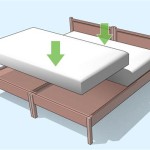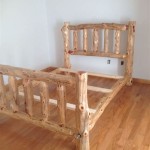What Age Should You Get a Queen Bed?
Deciding when to upgrade to a queen-size bed is a common question for families. Several factors influence the optimal time for this transition, including the child's physical development, available space, and budget. There's no single right answer, but understanding these elements can help families make an informed decision.
Physical Development and Sleep Needs
A child's physical growth and sleep patterns are key considerations. A twin bed is typically sufficient for younger children, but as they approach adolescence, their sleep needs and physical size change. A queen bed offers more space and comfort, promoting better sleep quality during these crucial developmental years.
Available Bedroom Space
The dimensions of the bedroom play a significant role in determining bed size suitability. A queen bed requires more floor space than a twin, impacting the room's layout and available space for other furniture and activities. Careful measurement and planning are essential to ensure the room remains functional and comfortable after the transition.
Budgetary Considerations
Queen-size beds, mattresses, and bedding are generally more expensive than their twin-size counterparts. Families should consider the overall cost, including the bed frame, mattress, box spring (if needed), bedding, and potentially any room modifications required to accommodate the larger bed. Setting a budget beforehand can help manage expenses.
Social Factors and Lifestyle
Social factors, such as sleepovers and hosting friends, can influence the decision. A queen bed offers more space for sharing, making it a comfortable option for sleepovers or accommodating guests. If a child frequently has friends stay over, a queen bed might be a practical choice.
Transitioning from a Crib or Toddler Bed
Transitioning directly from a crib or toddler bed to a queen bed is generally not recommended. A twin bed provides a more manageable step, offering increased space while still feeling secure and age-appropriate. Skipping the twin bed stage can sometimes feel overwhelming for younger children.
Signs a Child Might Need a Bigger Bed
Several indicators suggest a child might benefit from a larger bed: * Consistently outgrowing the current bed, with feet hanging over the edge. * Expressing discomfort or difficulty sleeping in the current bed. * Increased tossing and turning or restlessness during sleep. * A significant growth spurt indicating the need for more sleeping space.
Long-Term Investment and Resale Value
A queen-size bed can be considered a long-term investment, often lasting through adolescence and into adulthood. This longevity makes it a potentially cost-effective choice in the long run. Additionally, queen beds tend to hold their resale value better than smaller sizes, offering potential resale opportunities in the future.
Psychological Impact of a Bigger Bed
Changing to a larger bed can be a significant event for a child, representing a step towards greater independence and maturity. This transition can be handled positively by involving the child in the selection process, allowing them to choose bedding and accessories, and making it a celebratory occasion. This helps create a sense of ownership and excitement about the new bed.
Considering Future Needs
When deciding on a bed size, it's helpful to anticipate future needs. If the child is likely to continue using the same bedroom for several years, a queen bed might be a more suitable choice. This eliminates the need for another bed upgrade in the near future, saving money and effort in the long run.
Maintenance and Cleaning
Larger beds require larger bedding and increased effort for cleaning and maintenance. Factors like laundry capacity and ease of changing sheets should be considered. While the difference might seem minor, the added effort can be noticeable over time.
Room Configuration and Functionality
The overall room layout and functionality are crucial. A queen bed might necessitate rearranging furniture or removing some items to maintain adequate space. Consider how the larger bed will impact traffic flow and access to other areas of the room, ensuring the room remains practical and comfortable.
Alternative Bed Sizes
While twin and queen beds are common choices, exploring alternative sizes like full or double beds can be beneficial. A full bed provides more space than a twin without the significant size increase of a queen, offering a potential compromise for smaller rooms or budget constraints.
Seeking Expert Advice
If uncertainty persists, consulting with a sleep specialist or interior designer can offer valuable insights. They can provide tailored recommendations based on the child's specific needs, room dimensions, and other relevant factors, helping families make the best decision for their situation.

What Size Bed Is Right For My Child Cuckooland

Full Vs Queen Size Bed 2024 Mattress Nerd

Full Vs Queen Size Mattress What Is The Difference Nectar Sleep

Best Mattress For Kids Of 2024 Expert Picks Every Age

How To Know If Your Child Is Ready For An Sized Bed

Twin Vs Full Queen Which Mattress Size Is Right For You Dreamcloud

King Vs Queen Bed What S The Difference Mattress Clarity

Full Vs Queen Size Mattress What Is The Difference Dreamcloud

Twin Vs Full Bed Which Is Your Best Choice Parachute Blog

The Difference Between A Queen And King Bed Bedinabox







